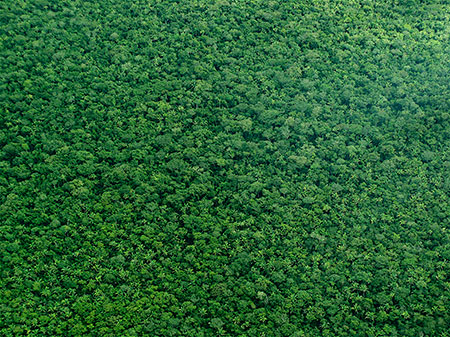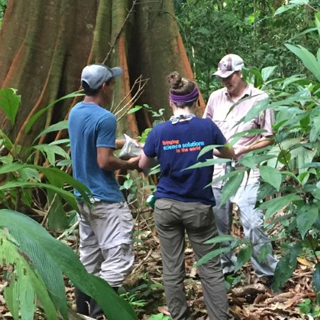Research we do
Nutrient cycling in terrestrial ecosystems
 I work on a range of projects in a variety of ecosystems and at multiple scales, but they all share one thing in common: They all reflect my interest in understanding carbon and nutrient cycling in terrestrial ecosystems. Under that overarching theme, my interests are diverse, as are the backgrounds and interests of the undergraduate and graduate students and postdocs that I have been fortunate to work with over the years. If you think any of the projects below sound exciting, or if you have your own idea that you’d like to pursue, please feel free to contact me to discuss opportunities in the lab!
I work on a range of projects in a variety of ecosystems and at multiple scales, but they all share one thing in common: They all reflect my interest in understanding carbon and nutrient cycling in terrestrial ecosystems. Under that overarching theme, my interests are diverse, as are the backgrounds and interests of the undergraduate and graduate students and postdocs that I have been fortunate to work with over the years. If you think any of the projects below sound exciting, or if you have your own idea that you’d like to pursue, please feel free to contact me to discuss opportunities in the lab!
Biogeochemistry of northwestern U.S. forests
 We are interested in the effects of environmental change on forest structure composition on ecosystem function, and especially how restoration treatments - designed to emulate pre-settlement aboveground stand structure and fire regimes - impact carbon and nutrient cycling in mixed coniferous forests. I am regularly looking for graduate students to develop and conduct research projects investigating the causes and consequences of disturbance induced environmental change in forested ecosystems, and/or the effects of forest restoration on ecosystem processes.
We are interested in the effects of environmental change on forest structure composition on ecosystem function, and especially how restoration treatments - designed to emulate pre-settlement aboveground stand structure and fire regimes - impact carbon and nutrient cycling in mixed coniferous forests. I am regularly looking for graduate students to develop and conduct research projects investigating the causes and consequences of disturbance induced environmental change in forested ecosystems, and/or the effects of forest restoration on ecosystem processes.
Biogeochemistry and community assembly during long-term ecosystem development
 We study relationships between element abundance, microbial communities and ecosystem processes by utilizing both short (< 100 years following glacial retreat) and long (4000 ky in the Hawaiian Islands) chronosequences. We are particularly interested in the drivers and mechanisms of biotic succession and ecosystem development through time, and much of our work utilizes chronosequences to explore how ecosystems change through time.
We study relationships between element abundance, microbial communities and ecosystem processes by utilizing both short (< 100 years following glacial retreat) and long (4000 ky in the Hawaiian Islands) chronosequences. We are particularly interested in the drivers and mechanisms of biotic succession and ecosystem development through time, and much of our work utilizes chronosequences to explore how ecosystems change through time.
The global N cycle
 Human activities have driven profound changes to the global nitrogen (N) cycle, with estimates indicating that anthropogenic activities like food and energy production have roughly doubled the annual N added to terrestrial ecosystems via natural processes. I am interested in understanding how these increases in environmental N availability affect both humans and the ecosystems we depend on. Members of my lab collaborate with several groups on a range of projects, including plot-level estimates of the effects of N deposition on soil and plant processes and diversity, analyses of the effects of salmon-derived nutrients on ecosystem processes, and global-scale estimates of the effects of N on human health, among others.
Human activities have driven profound changes to the global nitrogen (N) cycle, with estimates indicating that anthropogenic activities like food and energy production have roughly doubled the annual N added to terrestrial ecosystems via natural processes. I am interested in understanding how these increases in environmental N availability affect both humans and the ecosystems we depend on. Members of my lab collaborate with several groups on a range of projects, including plot-level estimates of the effects of N deposition on soil and plant processes and diversity, analyses of the effects of salmon-derived nutrients on ecosystem processes, and global-scale estimates of the effects of N on human health, among others.
Tropical Forests & Global Environmental Change
 Tropical forests are diverse, highly productive, and exchange more carbon (C) and energy than any other ecosystem type. Global environmental change is affecting aboveground processes in tropical forests in many ways but such responses are tightly coupled to belowground processes. However, many of the factors that regulate ecosystem processes in these ecosystems remain poorly understood, confounding our ability to predict how they are likely to respond to a changing environment. For nearly 20 years, members of my group have been studying basic ecosystem processes in tropical forests, but and we are also very interested in understanding how they are being affected by environmental change.
Tropical forests are diverse, highly productive, and exchange more carbon (C) and energy than any other ecosystem type. Global environmental change is affecting aboveground processes in tropical forests in many ways but such responses are tightly coupled to belowground processes. However, many of the factors that regulate ecosystem processes in these ecosystems remain poorly understood, confounding our ability to predict how they are likely to respond to a changing environment. For nearly 20 years, members of my group have been studying basic ecosystem processes in tropical forests, but and we are also very interested in understanding how they are being affected by environmental change.
Relationships between ecosystem structure and function
 Much of our work is focused on understanding the relationship between soil processes and the identity of the organisms carrying out those processes. Current measurements of ecosystem processes variables (e.g., soil respiration) represent the net effect of the processes carried out by a suite of microorganisms. However relationships between the structure of the soil microbial community and specific biogeochemical processes are not well understood, especially in tropical ecosystems. A goal of our work is to study linkages between microbial community composition and specific biogeochemical processes. Such information is critical for assessing the role of soil diversity in regulating ecosystem processes.
Much of our work is focused on understanding the relationship between soil processes and the identity of the organisms carrying out those processes. Current measurements of ecosystem processes variables (e.g., soil respiration) represent the net effect of the processes carried out by a suite of microorganisms. However relationships between the structure of the soil microbial community and specific biogeochemical processes are not well understood, especially in tropical ecosystems. A goal of our work is to study linkages between microbial community composition and specific biogeochemical processes. Such information is critical for assessing the role of soil diversity in regulating ecosystem processes.
